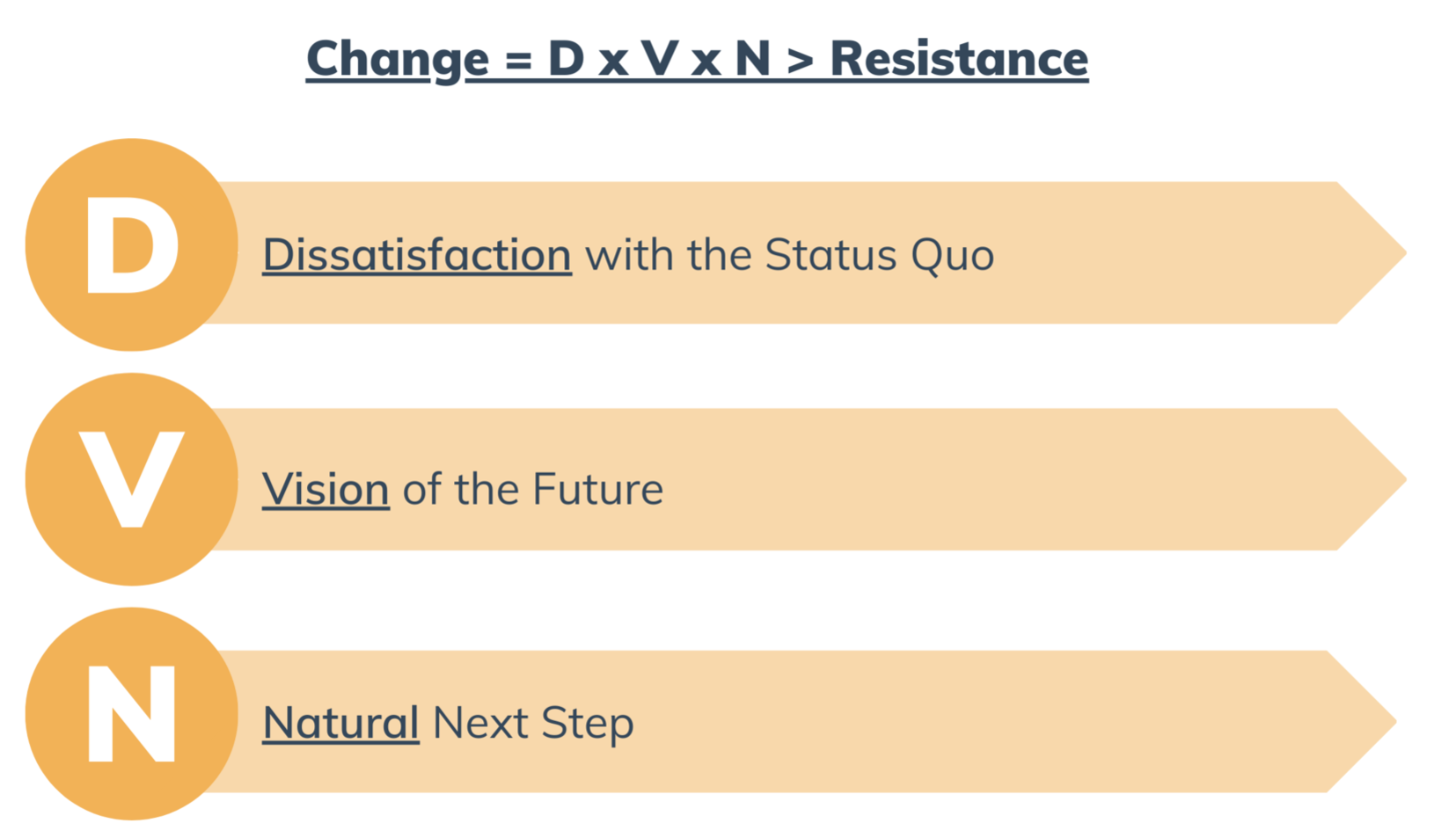The Change Equation: “The Formula To Drive Change”
This week on The Hack Podacst Leon, Paul and Dean
The Change Equation: “The Formula To Drive Change”
The idea of 'change' affects every business at some point. Whether it's introducing a new product, adapting to market trends or responding to customer feedback - change is simply a part of doing business. In this week's 100 x podcast, Leon, Dean, and Paul talk about the change equation and how to apply it in your business.
Change can be incredibly beneficial - helping us grow and take our team to the next level. On the other hand, it also has its challenges, especially for leaders of people who must navigate an ever-changing environment. It can be beneficial to use the Change Equation to help ensure you're making the most effective and efficient changes possible.
The Change Equation
The Change Equation is an equation used to calculate how successful a change process will be. Executing this equation helps create a strong foundation for implementing positive changes in a timely and cost-effective way while also being able to identify possible problems before they become bigger issues. They are many models used in change management. We use a formula similar to the Beckhard-Harris example, which considers dissatisfaction, vision, and the natural next steps to provide the least resistance.
Here's an example of how the equation looks:
Change = D X V X N > Resistance

The first side considers Dissatisfaction with the status quo (D), which refers to the current state of affairs and what you may be dissatisfied with. A vision of the future (V) is the desired outcome that you want to reach. Natural Next Steps (N) indicates how to create an action plan to move from the current state to the desired outcome to overcome dissatisfaction and make this vision happen?
By looking at each of these variables and how they interact, it becomes easier to create an effective change equation.
1. Identify the right changes
The Change Equation helps identify and quantify the elements that could determine whether a change process will succeed. It also helps to visualise what must be done to get from one point of dissatisfaction to the desired outcome. This can help make decision-making easier because, when striving for a vision, it's essential to know the potential obstacles and how best to overcome them to prevent employee resistance.
2. Prepare your team for the change process
Effective leaders should ensure their team is aware of any upcoming changes and the impact they will have. This requires building trust, good communication and active listening between the leader and team members, with regular meetings to discuss progress, challenges and goals related to the change process.
It's also important to create an environment where employees feel comfortable voicing their concerns without feeling judged and providing support when needed. This can help develop a sense of safety and trust, allowing for open dialogue and collaboration in managing resistance the change process.
3. Measure the success of a change initiative
The success of a change initiative can be measured by tracking the progress towards the desired outcome and goals set out at the beginning. It's important to have tangible metrics and management tools such as timelines, milestones and KPIs to measure how successful changes are when implemented.
4. Ensure the team is on board with changes
It's vital to ensure that team members understand why changes are being made and how they will be impacted. This requires effective leadership communication and an opportunity for employees to voice their opinions and feelings about the change process.
5. Manage the expectations of stakeholders during times of change
Stakeholders need to be kept up-to-date on the progress of a change process. This means providing regular communication and updates, especially regarding possible delays or timeline changes. It's also important to listen to their feedback and concerns throughout the process and involve them in decision-making where appropriate.
Key Takeaway Points:
The Change Equation tool:
Illustrates that change happens when three factors (DVN) are greater than the resistance to change.
It provides a simple framework for understanding the conditions required for healthy change and a guide for helping craft an effective narrative for change to communicate with your people.
It ensures we think through both the present (status quo) and the future (vision) effectively, meaning we will be sure to speak to all Voices in the room.
It also ensures we provide our people with clarity of what to do moving forward.
But we must make sure we understand the true reason for resistance as well.
Conclusion
Ensuring that each step is done accurately and thoroughly will make any change more likely to be successful. Using all these factors together allows you to create a strong foundation for making positive changes within your business environment without taking too long or costing too much money! You can also identify potential problems early on and alter your plans accordingly before they become bigger issues further down the line. Once you understand this simple formula and have identified where resources are needed as well as potential impediments, you'll be on your way towards driving real-lasting change in no time!
Sponsored by: Talk suicide
Powered By: Think Cloud
Tagged as: 100x Leadership, The Hack Podcast
Share this post:

